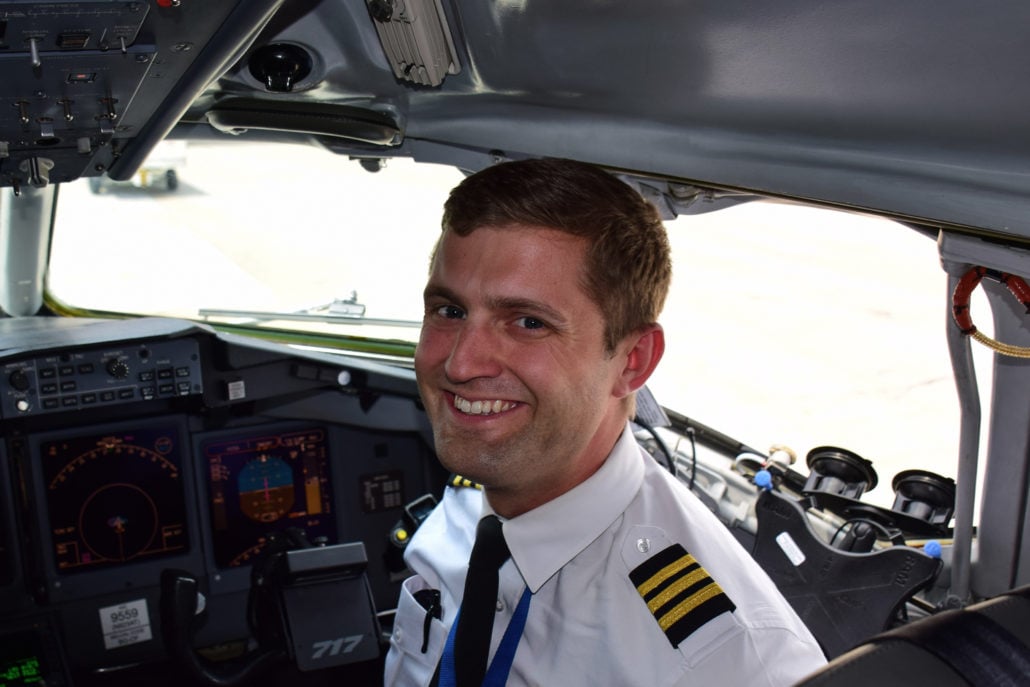
In our Ask a Pilot series, pilot Spencer Marker answers one of your aviation-related questions each week. See past installments here and submit your own to whitney@johnnyjet.com.
The question
What goes on during an airplane’s time at the gate between flights?
—Fran
The answer
From the time an airplane sets its parking brake at the gate and passengers begin to deplane, the ground around the airplane erupts into a flurry of activity. It’s truly a team effort to resupply an airplane and get it back in the air. Since airlines only make money when the airplane is flying, turning the airplane around is a very a well-choreographed, efficient dance. Sometimes lasting less than 30 minutes, the turnaround is a vital, yet often unappreciated, part of the flight schedule that ensures on-time departures.
Below the wing
When the pilots set the parking brake, ramp agents leap to work on numerous tasks preparing the airplane for its next departure. These include the unloading of bags and cargo (most airlines in the US also carry cargo, like US mail, on board passenger flights), sorting the bags that will connect to a different destination, and loading baggage and cargo for the next flight.
Ramp agents will also connect ground electrical power to the aircraft. A large yellow duct is also attached to provide conditioned air to the cabin. This allows us to keep the lights on and the cabin at a comfortable temperature without burning fuel. While this is going on, the fueling technician connects a large hose to the aircraft and pumps the fuel for the next flight. The specific fuel loading for a flight is based on several FAA mandated requirements and is transmitted from the airline’s headquarters to the fuel tech automatically.
Between flights, an airplane will receive what pilots call a lav service. This thankless task involves emptying the plane’s lavatory waste holding tank and resupplying fresh pre-treated water to be used in the restroom. A dirty job, but a convenience for passengers we are happy to have.
Turns at airline hubs also allow maintenance to perform preventative checks or accomplish routine tasks. These can include replenishing engine oil, changing a tire, and checking lights to ensure their proper function. These simple checks ensure the airplane always leaves the gate in tip-top shape and keeps the operation on time.
Above the wing
While the ramp team is doing its work on the ground turning the airplane around, work is also being accomplished in the cockpit and cabin. Once again, many hands working together ensure the airplane is refreshed for its next flight.
Once the last passenger steps off the airplane, cleaners enter, and begin picking up trash left onboard and vacuuming the floors. They also replace cabin blankets and pillows in first class and clean up the restrooms for oncoming passengers. Catering also visits the airplane during turns to resupply the galleys (what we call our onboard kitchens). These catering visits can be simple affairs for airplanes flying short distances, often just consisting of restocking or replacing beverage carts. For longer segments, caterers will load premade meals into the ovens and place new snacks and fresh food carts in the galleys. Leftovers from the previous flight are also removed.
Flight attendants are also busy during these turns. Once catering is delivered, it’s their job to ensure they have everything they need for the upcoming flight. For many airlines, brand consistency is paramount and flight attendants are the last line of defense in ensuring passengers are getting exactly what they expect. Flight attendants at some airlines also lend a hand in cleaning up the cabin, picking up trash previous passengers may have left behind.
Pilots also have much to do during our time on the ground. While the airplane is at the gate, we must accomplish our routine safety checks, which involve checking cockpit safety systems to ensure their operation and configuring the airplane for its next departure. While this is going on, one pilot will load the onboard computer with the next flight’s routing and other important information.
Additionally, when the airplane is on the ground, pilots will complete their preflight inspection on the outside of the aircraft. We call this the walk around. During a walk around, pilots are carefully examining the physical condition of the airplane, paying very close attention to vital equipment like tires, engines and aircraft sensing equipment, among many other things. If a pilot finds something amiss on the walk around, maintenance is called for further inspection and repair.
To sum up
All of this behind-the-scenes activity goes on without the average passenger noticing. I’m happy I get to discuss this process because it takes a lot of effort from a great number of people to ensure that once an airplane arrives at the gate, it receives everything it needs to get back into the air again safely. From the ramp agents to the flight attendants, every member of the team plays a vital role in keeping the operation safe and on time.
Thanks again for your question! And if you have a burning aviation question or something you would like cleared up, drop us a line at Whitney@johnnyjet.com to get your question featured in an upcoming Ask a Pilot column.
Tailwinds,
—Spencer







